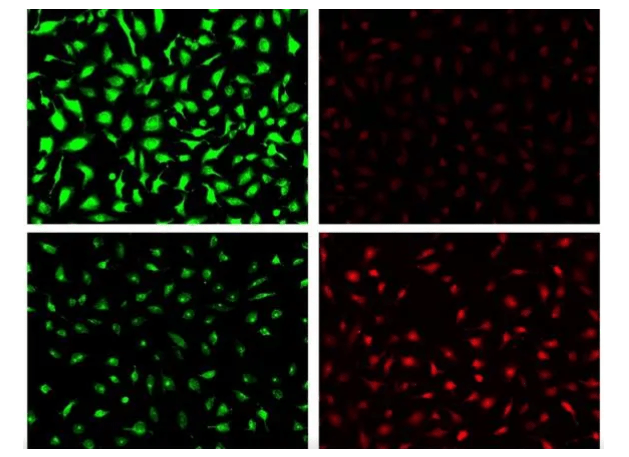The difference between peptide fluorescent labeling and protein fluorescent labeling
Can it be accurately labeled
Fluorescent peptide labeling is basically labeled in the peptide synthesis process, and almost all active groups are completely protected at this time, so the fluorescent peptide labeling is an extremely accurate site-point labeling, and then purified by HPLC to improve the purity of the labeled peptide to more than 95% or 98%.
For example, FAM tags are used for a certain sequence
The sequence is: H2N-D1-A2-G3-L4-E5-K6-G7-V8-K9-COOH
There are 3 amino groups in the sequence, all of which can be labeled with FAM respectively, such as
It is labeled on the N-terminal amino group: FAM-D1-A2-G3-L4-E5-K6-G7-V8-K9
K6 side chain amino: D1-A2-G3-L4-E5-K6(FAM)-G7-V8-K9
On the amino side chain of K9: D1-A2-G3-L4-E5-K6-G7-V8-K9(FAM)
The fluorescent labeling of protein is non-fixed-point labeling, which is also called arbitrary labeling. In general, a protein molecule will have many amino groups, sulfhydryl groups, or other groups. For example, fluorophores bind to amino groups of protein molecules, because the number of amino groups is not unique, so there will be many kinds of binding of protein molecules and fluorophores, and the final result must be a mixture of molecular structure is not single. However, in some relevant studies, this reason is almost negligible, as long as the protein molecule is labeled with the fluorophores, regardless of where the fluorophores are labeled.

The amount of fluorescent molecules used
In peptide fluorescent labeling, in general, the amount of fluorescent molecules used is dozens of times, or even hundreds of times, that of protein labeling, for example, if you want to obtain 5mg95% fluorescent labeled peptides, at least 200mg or 300mg fluorescent molecules. Whereas protein fluorescence labeling can be used in an equal molar dosage ratio, the use of fluorescent molecules may only be a few milligrams. Therefore, limited by the price of fluorescent molecular raw materials, the types of fluorescent peptide labels are very few, and the common ones are FAM, FITC, TAMRA, RhodamineB and so on.
The environment after fluorescent labeling
After fluorescent labeling, the peptide can generally be treated with a higher concentration of trifluoroacetic acid, placed in a strong acid environment, and then purified by HPLC. The treatment of the protein after fluorescent labeling is much milder and can be purified directly by dialysis or HPLC.
Omizzur Biotech custom peptide synthesis business includes: drug peptides, clinical peptides, stapled peptides, starch peptides, aldehydes peptides, cyclic peptides, disulfide bridging peptides, transmembrane peptides, various antimicrobial peptides, cosmetic peptides, phosphorylated peptides, PEG peptides, BSA and KLH coupling antigen peptides, peptide impurity synthesis,various acid modified peptides, various amine-modified peptides (aniline, isoamylamine, diethylamine), various fluorescent peptides. Labeled (FITC, FAM series, DOTA, TAMRA series, Cy series) isotope peptides, etc.
Read Related Articles:
Copyright © 2020 Omizzur Inc | Terms & Conditions | Privacy Notice | Sitemap